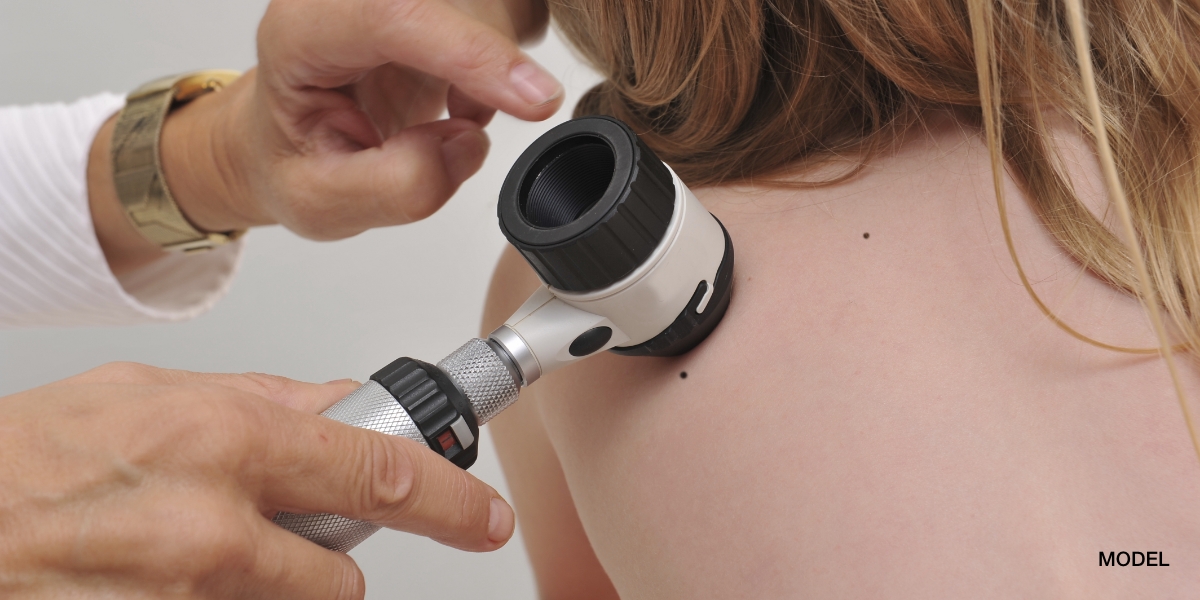Histoplasma capsulatumis a “deep fungus” causing Histoplasmosis that I have only occasionally encountered in my The Woodlands dermatology and Conroe dermatology clinics. It is endemic to the Ohio, Mississippi and Missouri river basins and is commonly found in the soil. Bat guana is a common source of infection and this disease is frequently seen in spelunkers. Most patients exposed to Histoplasmado not become infected as it is most common in immunocompromised patients. Approximately 250,000 people are infected annually and the most common route of infection is through inhalation where the lungs develop pneumonia. From the lungs, Histoplasmosis can disseminate hematogenously to other organs including the skin or through the lymphatics to the lymph nodes causing them to enlarge and occasionally uclerate. Most patients with Histoplasmosis are asymptomatic. The skin lesions of Histoplasmosis vary but can appear like Molloscum Contagiosum (see blog entry Viruses – Molloscum Contagiosum) with umbilicated flesh colored papules, or ulcers and deep nodules may predominate. In children, histoplasmosis is very severe and can involve the reticuloendothelial system (spleen, liver) and can be fatal. Purpura (bruising) is the most common dermatological manifestation in reticuloendothelial system involvement and usually appears only a few days prior to death. Patients may also have a secondary rash in response to Histoplasmosis such as erythema nodosum and erythema multiforme. The fungus cannot be isolated in these secondary rashes but they are merely an immune response to the Histoplasmosis. Diagnosis of Histoplasmosis is through skin biopsy or an ELISA urine test. On histology, very small round bodies are seen within macrophages. These look very similar to Leishmaniasis, but can be differentiated by them being distributed evenly throughout the macrophage and not lined up along the periphery forming a “marquis sign” as in Leishmaniasis. Treatment involves a systemic antifungal such as Itraconazole taken every day for 6-12 months.
October 13, 2010

Medically reviewed by Anthony J. Perri, M.D.
You May Also Like



Request a Consultation (Sidebar)
Recent Posts
Categories
- Uncategorized (581)
Tags
acne (6)
acne treatment (3)
acne vulgaris (2)
basal cell carcinoma (2)
biopsy (3)
cold urticaria (1)
common skin conditions (11)
dermatologist (15)
dermatology (7)
dr. perri (8)
dry skin (1)
eczema (2)
filiform (1)
health (3)
Herpes (1)
herpessimplex (1)
hives (2)
indentification (1)
keratosis pilaris (1)
Lichen Planopilaris (1)
melanoma (2)
moles (3)
periungual (1)
perri dermatology (10)
prevention (2)
rashes (2)
rosacea (3)
rosacea therapy (2)
skin cancer (6)
skin cancer screening (5)
skin care (2)
skin checks (8)
skin condition (6)
skin conditions (8)
skin damage (2)
skin exam (8)
summertime (3)
sunburn (3)
sunburns (2)
Sunprotection (1)
sunscreen (2)
virus (1)
warts (2)
why perri dermatology (3)
woodlands dermatologist (6)
